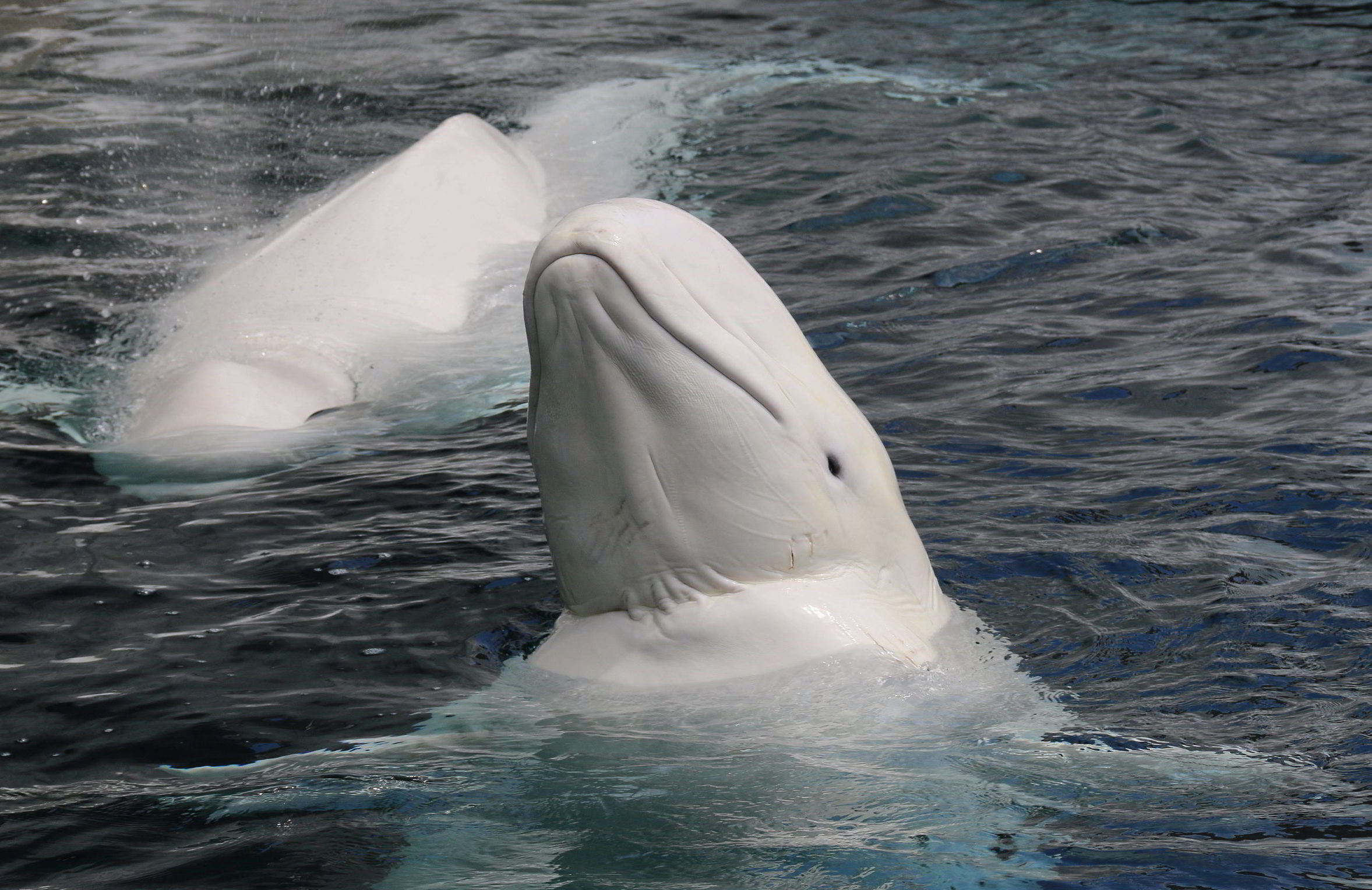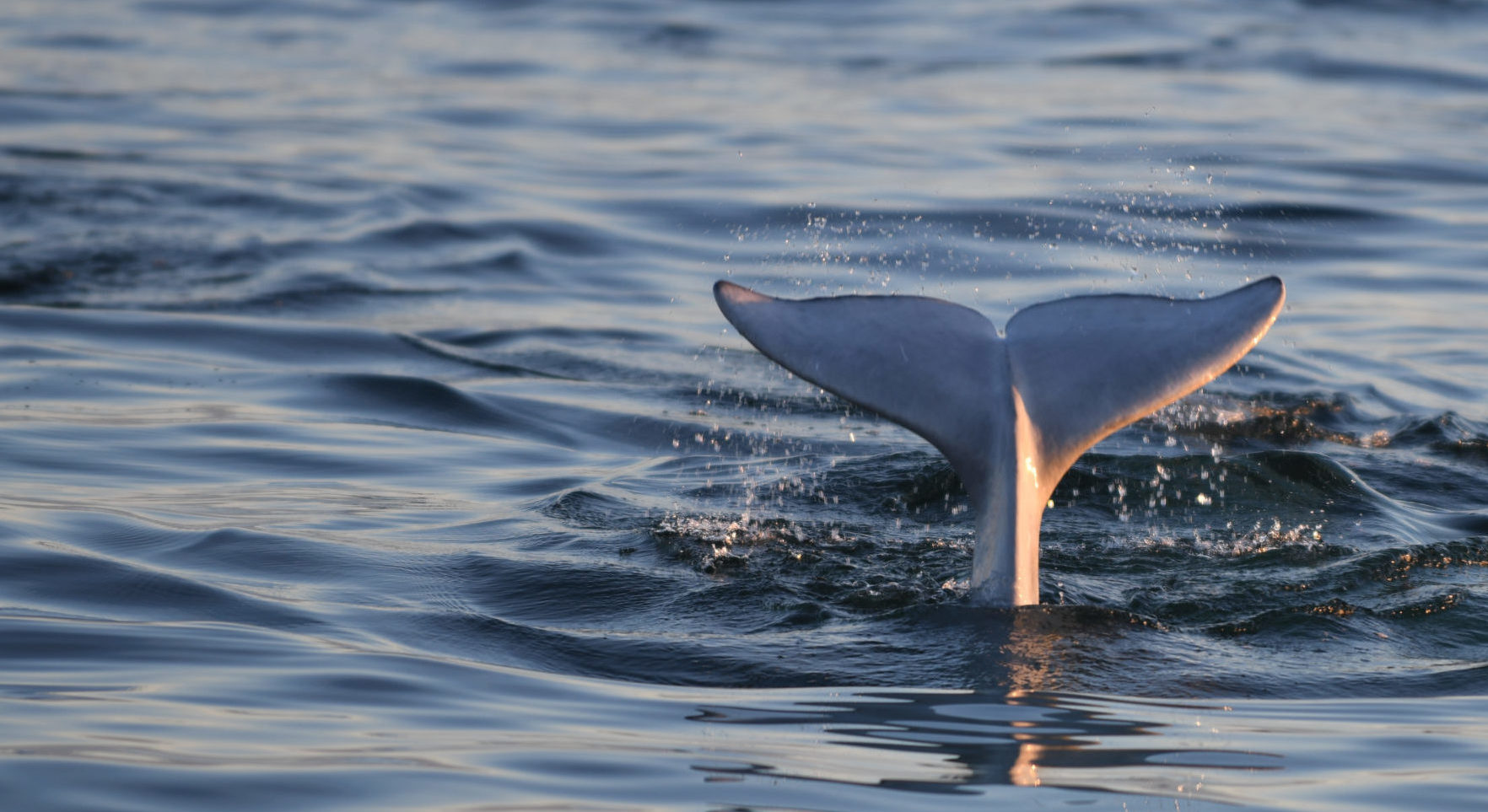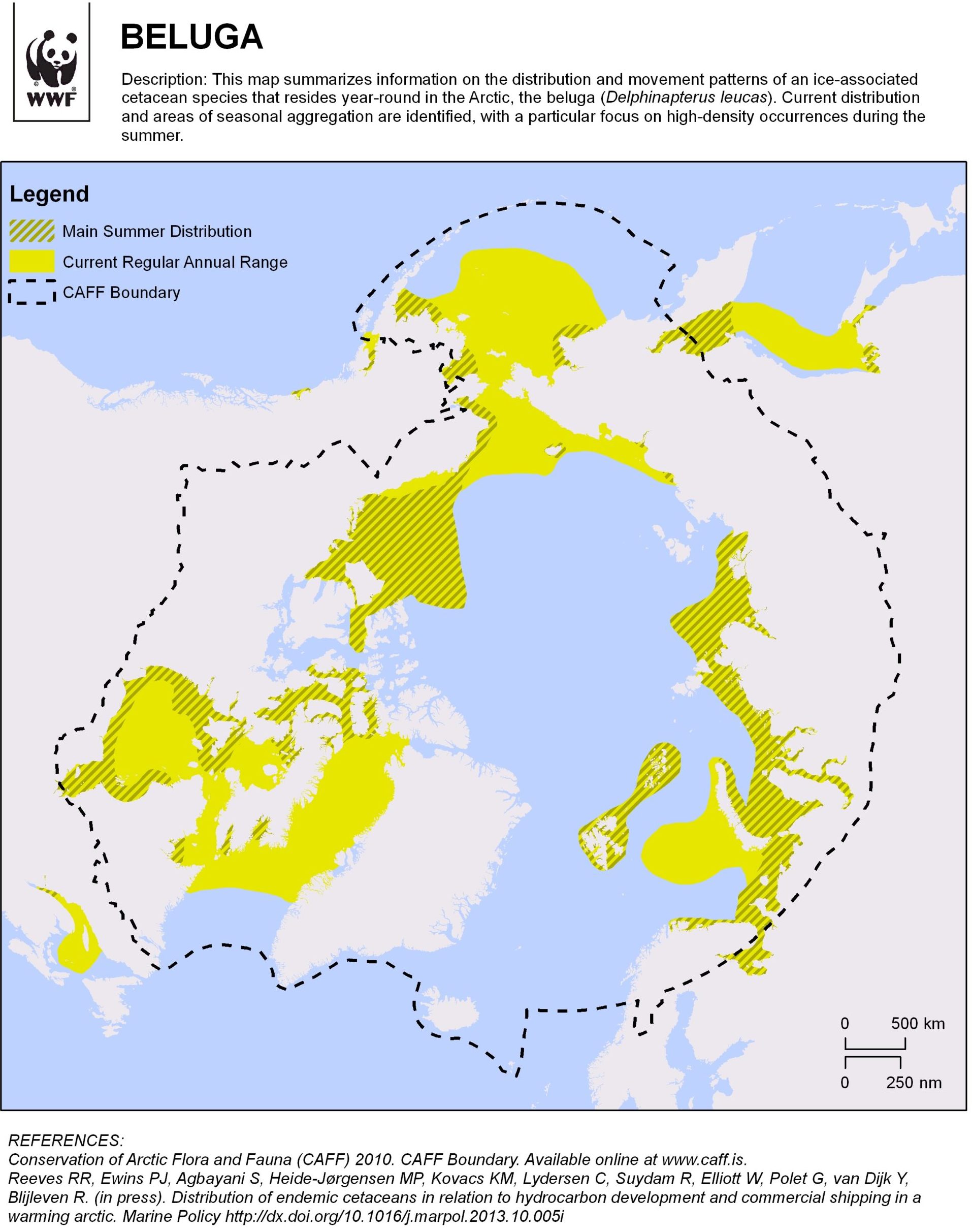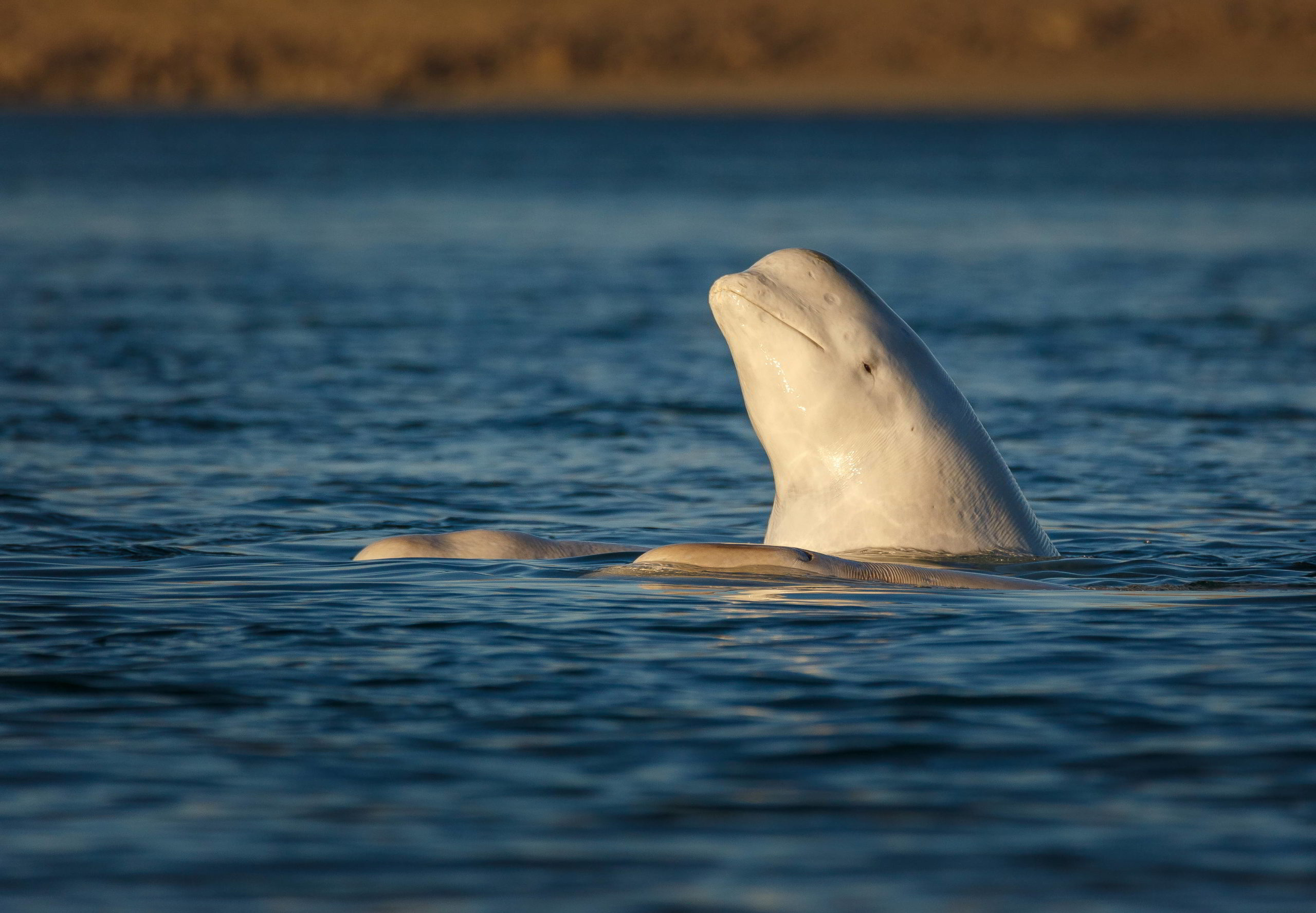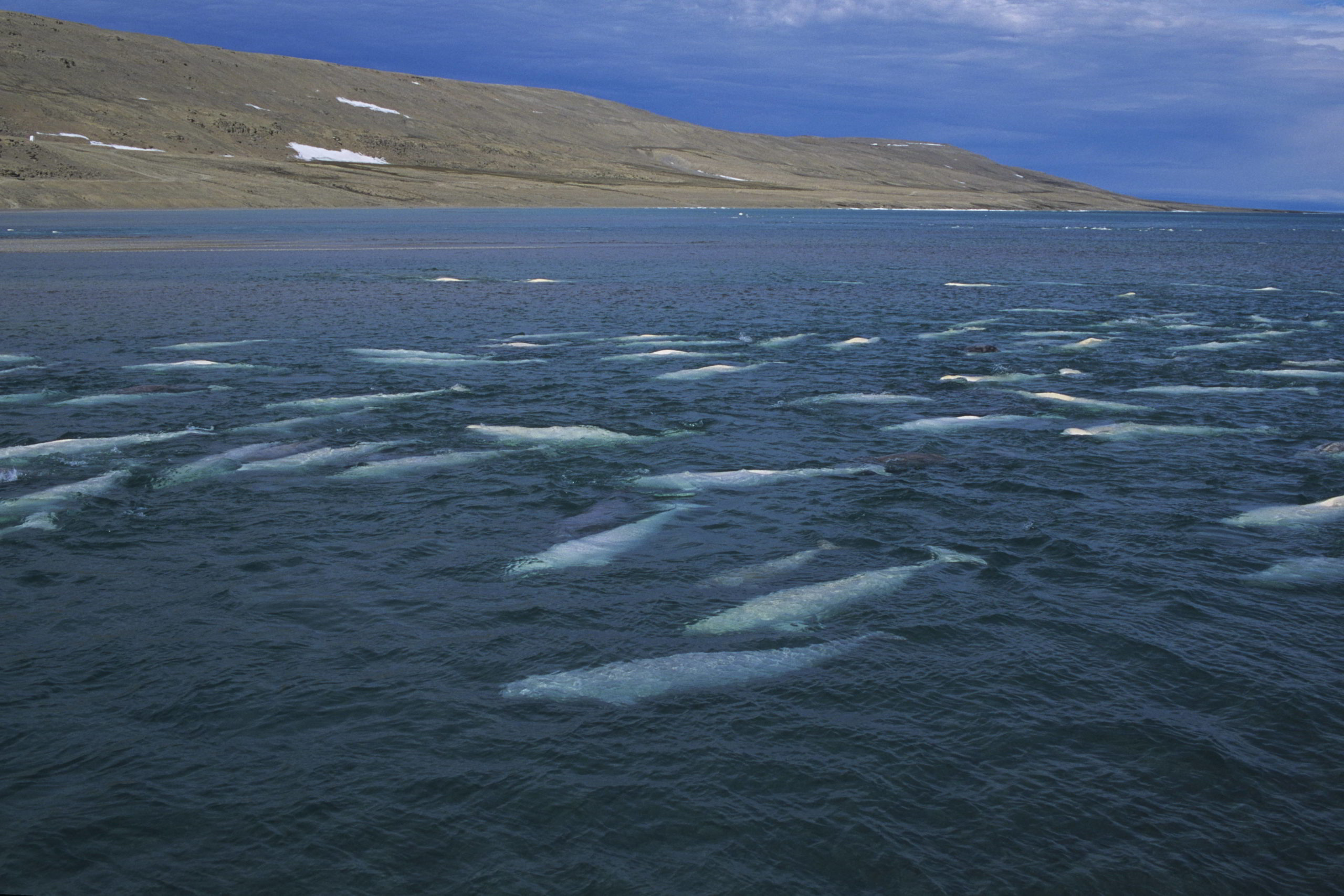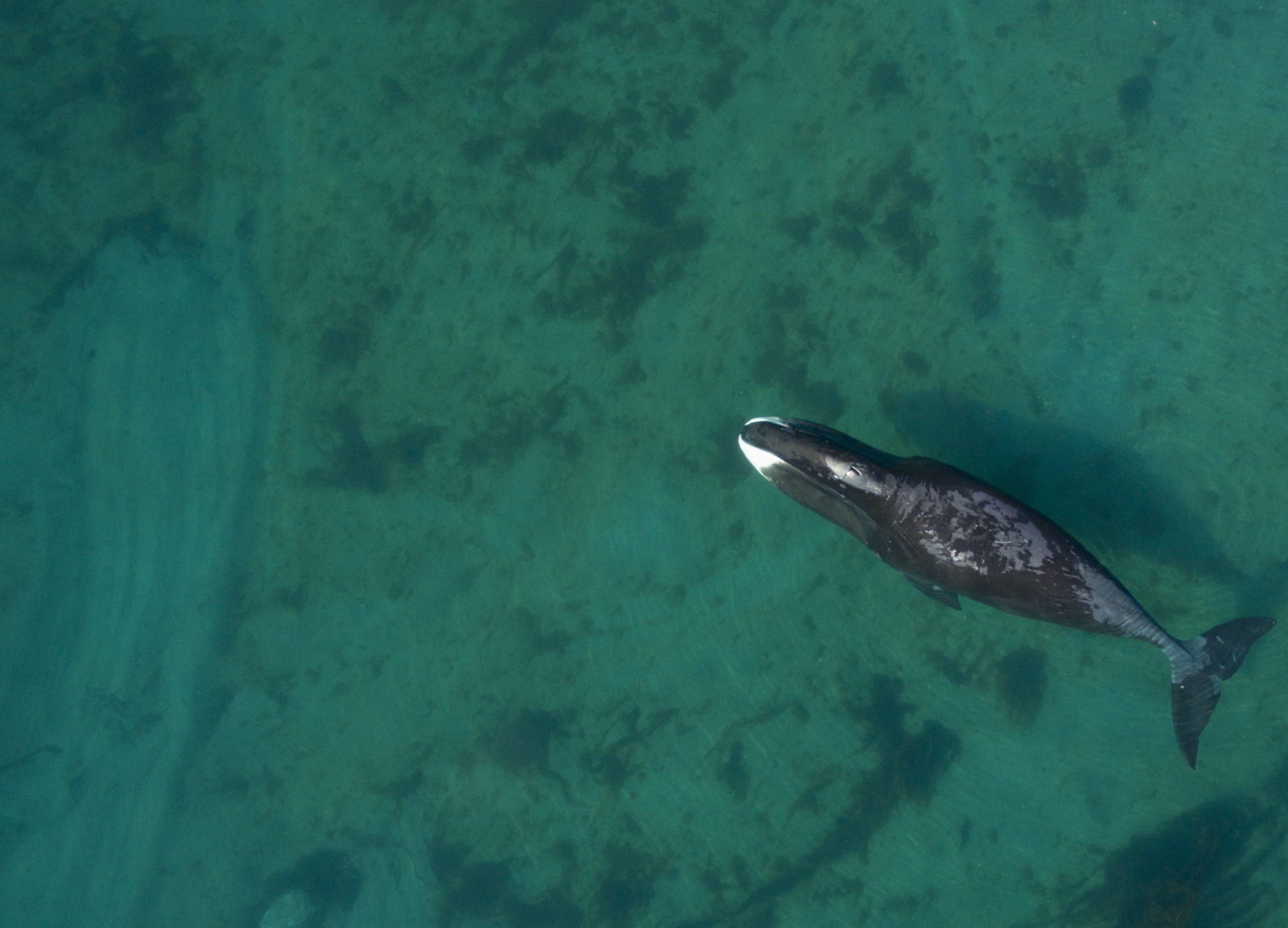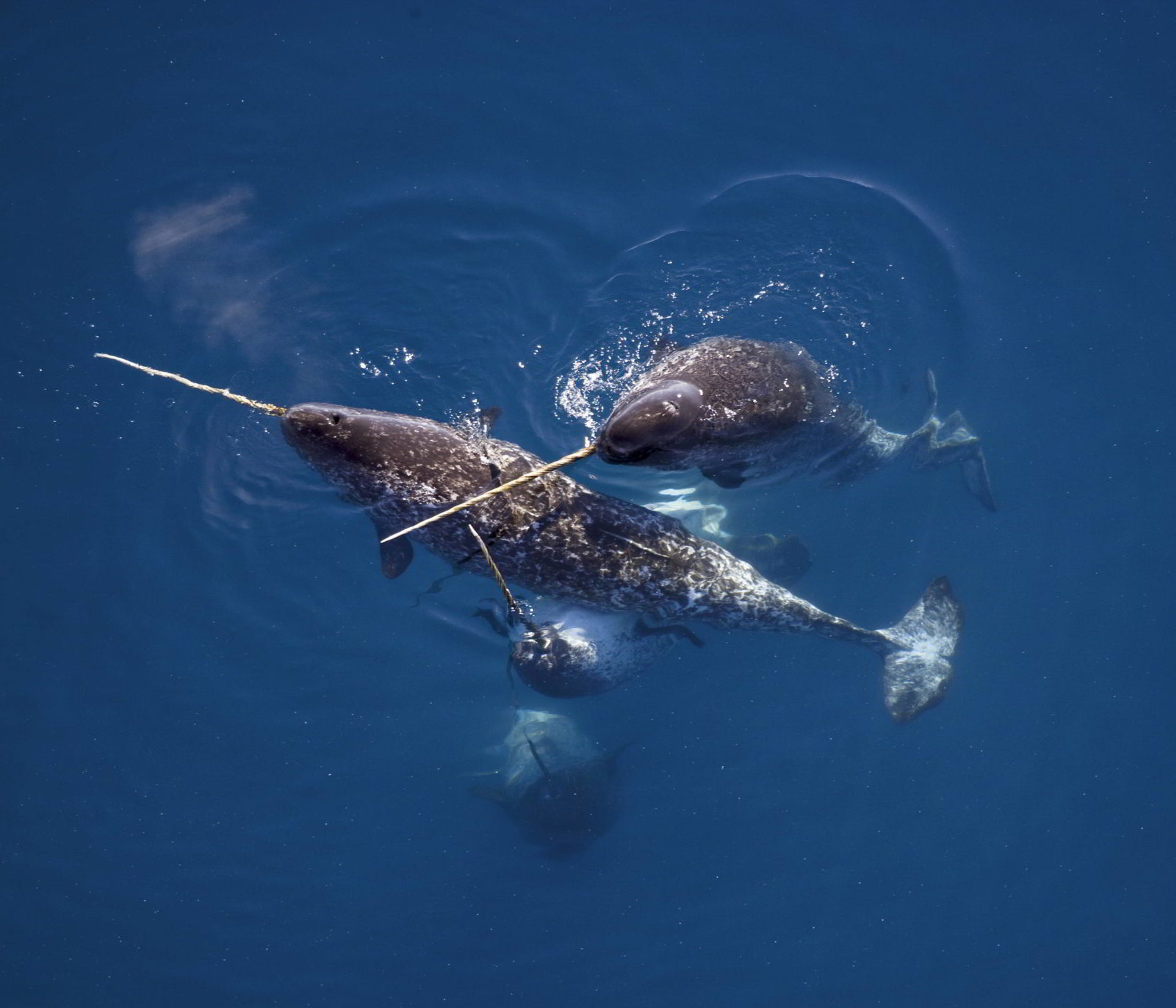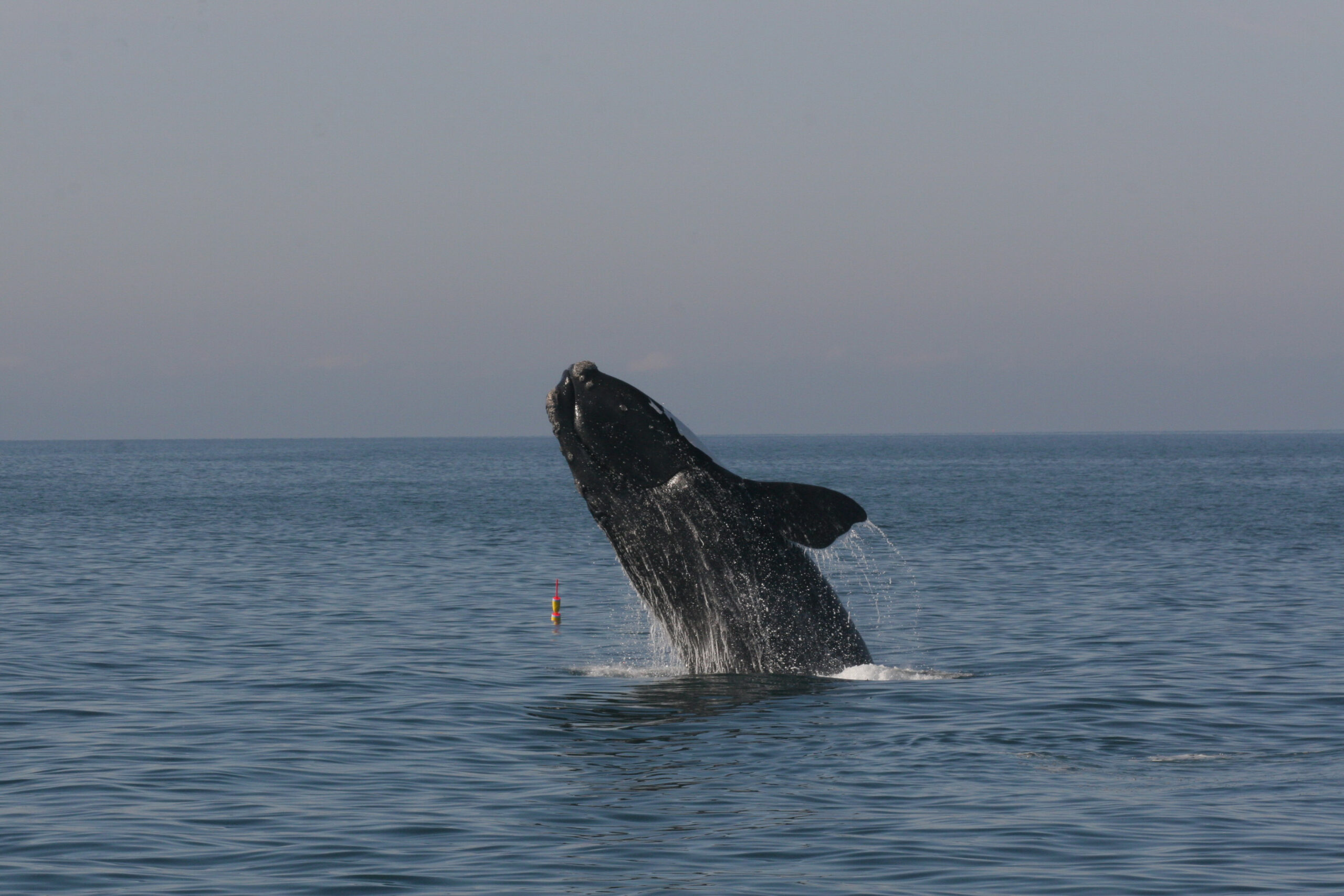Thousands of years of evolution have prepared Arctic species like the beluga for life on and around sea ice. Because of climate change, that ice cover has been changing rapidly, in both extent and thickness, and shrinking far too quickly for these species to adapt. Belugas depend on the sea ice for protection from predatory killer whales. Killer whales are becoming an increasing threat as the climate warms and sea ice retreats.
The melting ice is also opening Arctic waters to more human activities – including fishing, oil and gas exploration, mining operations and shipping. Seismic explorations and intense commercial shipping are causing noise pollution that likely has a major impact on belugas’ ability to communicate, detect predators, find food, and care for their young. Other threats, particularly to the St. Lawrence beluga population, include contamination by toxic chemicals, and a reduction in the abundance, quality, and availability of prey.
Belugas migrate to specific feeding, moulting and nursing areas every year. Their future depends on continued use of these important natural areas, unaffected by the adverse impacts of human activities.

